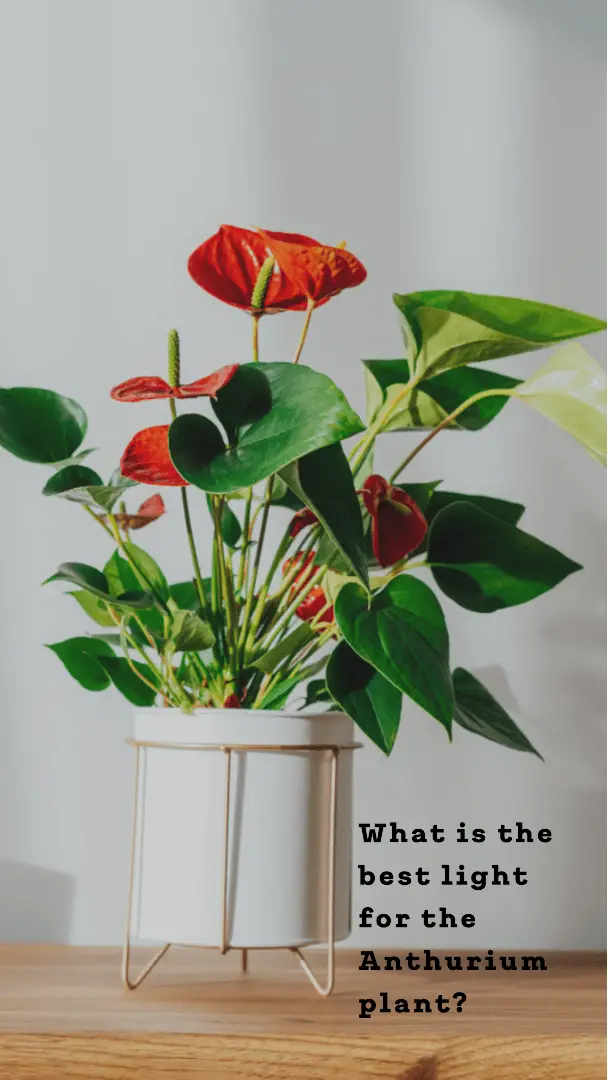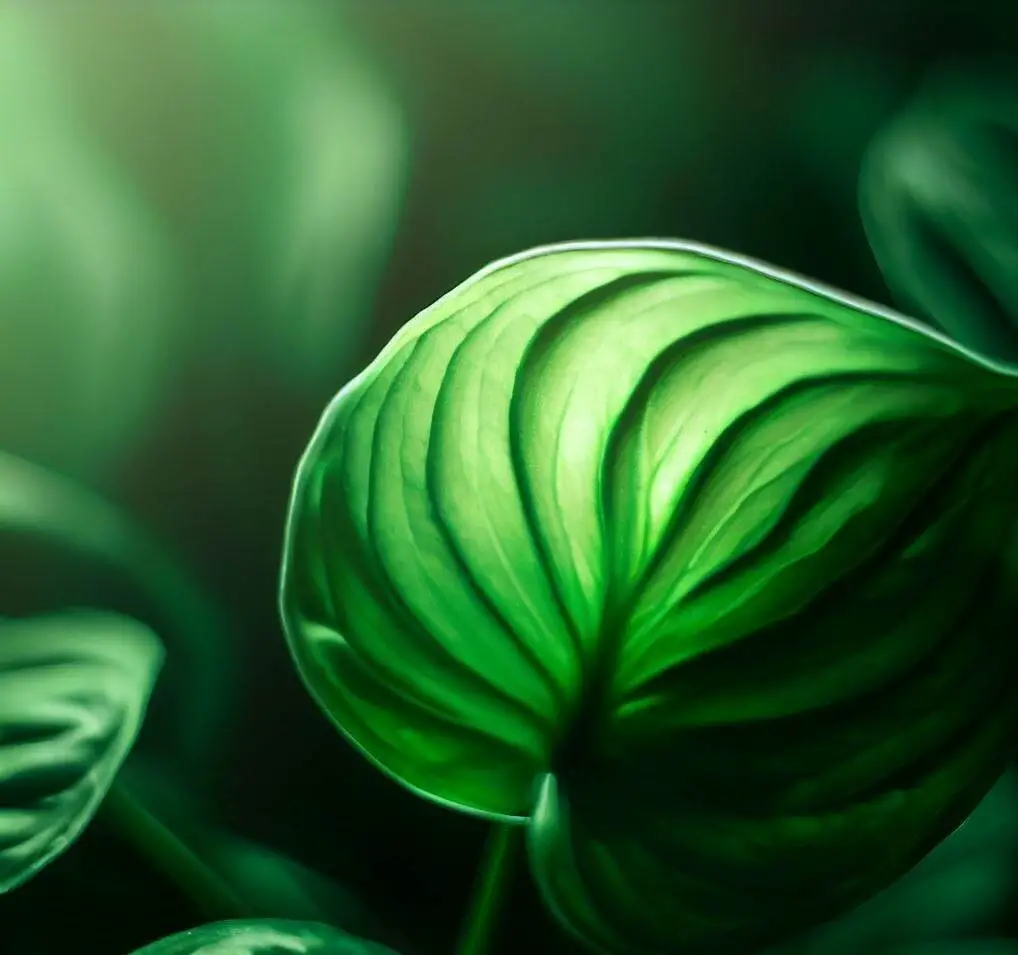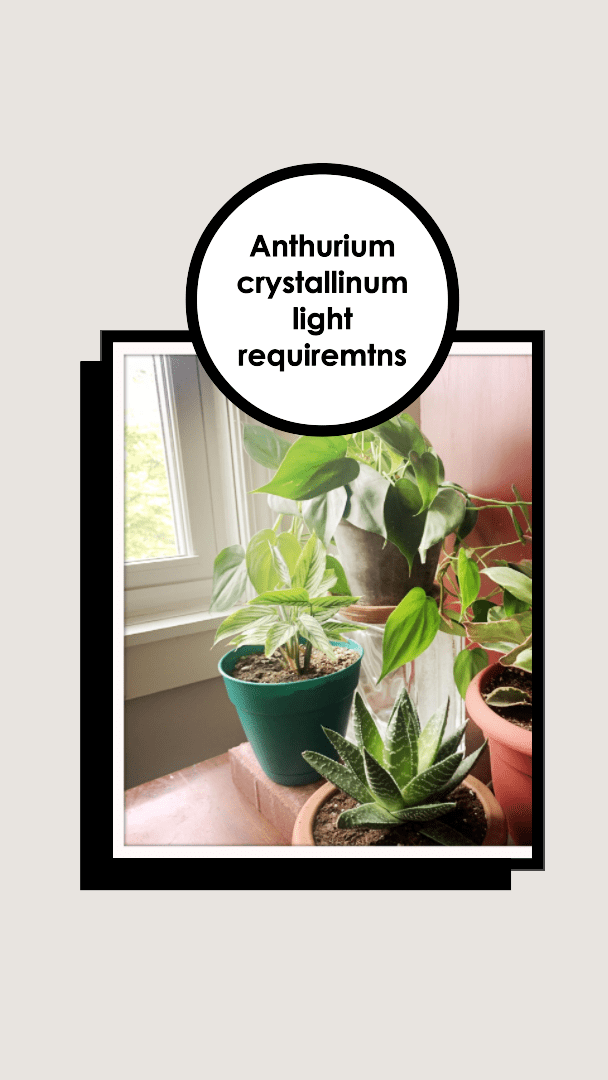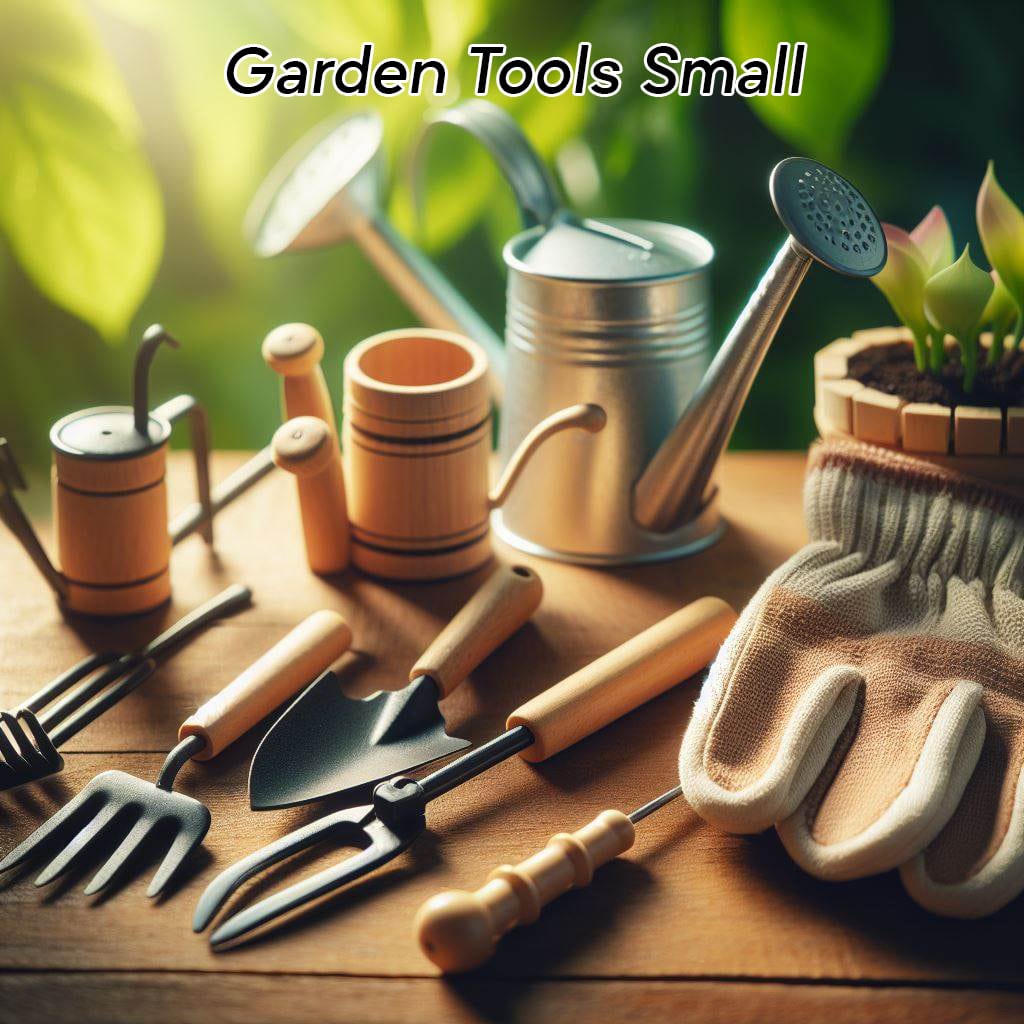The Anthurium crystallinum, also known as the Crystal Anthurium, has specific light requirements for optimal growth in this article we want to discuss Anthurium crystallinum light requirements so please be with us until the end.
In its natural habitat, the Anthurium crystallinum is found in rainforest understories where it receives filtered or dappled sunlight. It prefers moderate to low light conditions. Therefore, when growing this plant indoors, it’s essential to replicate its natural light environment to ensure healthy growth and prevent leaf damage.
Here are the light requirements for Anthurium crystallinum:
Indirect Light
Provide bright, indirect light for your Anthurium crystallinum. Place it near a window with filtered sunlight, but avoid exposing it to direct sunlight, especially during the harsh afternoon hours.
Low Light Tolerance
Anthurium crystallinum can tolerate lower light conditions, making it suitable for spaces with lower light levels. However, avoid placing it in areas with extremely low light, as this can slow down its growth and affect its overall health.
Avoid Direct Sun
Direct sunlight can scorch the delicate leaves of the Anthurium crystallinum. The best practice is to keep it out of the direct path of the sun’s rays.
Monitor Light Intensity
Observe your plant’s response to light. If its leaves start to show signs of stress, such as browning or yellowing, it might be receiving too much light. If its growth is slow and it’s not producing new leaves, it might need more light.
Seasonal Adjustments
Keep in mind that the intensity of sunlight changes with the seasons. During the spring and summer, you may need to adjust the placement of your plant to avoid excessive exposure to intense sunlight.
Providing the right amount of light is crucial for the Anthurium crystallinum’s well-being and growth. Finding the perfect balance of bright, indirect light will help your plant thrive and display its beautiful foliage.
What is anthurium plant
Anthurium plant, also known as the Flamingo Flower or Laceleaf, is a popular tropical houseplant and ornamental plant known for its unique and vibrant flowers and glossy, heart-shaped leaves. Anthuriums belong to the Araceae family and are native to the rainforests of Central and South America.
Key features of the Anthurium plant include:
Flowers
The most distinctive feature of Anthurium plants is their flowers, which consist of a colorful, modified leaf called a spathe, surrounding a spadix that contains the actual tiny flowers. The spathe comes in various colors such as red, pink, white, and green, adding a stunning visual appeal.
Leaves
Anthurium leaves are usually dark green and have a glossy, waxy texture. They are heart-shaped or elongated, contributing to the plant’s overall elegance.
Indoor and Outdoor Use
Anthurium plants can be grown both indoors and outdoors, depending on the climate. They are favored as houseplants for their striking appearance and air-purifying qualities.
Tropical Origin
Anthuriums thrive in warm and humid tropical environments. They require adequate humidity, filtered sunlight, and warm temperatures to flourish.
Long-Lasting Blooms
The flowers of Anthuriums can last for several weeks to months, making them an appealing choice for home decor.
Air Purification
Like many indoor plants, Anthuriums help improve indoor air quality by filtering out pollutants and toxins.
Variety
There are numerous Anthurium species and cultivars, each with its unique leaf shapes, flower colors, and sizes.
Care Requirements
Anthuriums require proper care, including suitable light, watering, humidity, and fertilization, to thrive and produce healthy foliage and flowers.
Due to their captivating appearance and relatively manageable care requirements, Anthurium plants are a popular choice among plant enthusiasts and interior decorators. They add a touch of exotic beauty to living spaces and can thrive with proper attention to their needs.
What are the prcodures of crytallinum light requirements?
The Anthurium crystallinum, commonly known as the Crystal Anthurium, has specific light requirements to ensure its healthy growth and vibrant appearance. Here are the procedures for providing the right light conditions for your Anthurium crystallinum:
Indirect Bright Light
Place your Anthurium crystallinum in an area with bright, indirect light. This means that it should receive sunlight, but not direct sunbeams. A spot near a north or east-facing window is usually suitable, as it provides gentle morning or filtered sunlight.
Filtered Light
In its natural habitat, the Crystal Anthurium grows beneath the canopy of trees where it receives filtered or dappled sunlight. You can replicate this environment by placing it near sheer curtains or using other methods to filter the sunlight that reaches the plant.
Avoid Direct Sunlight
Direct sunlight, especially during the intense midday hours, can scorch the delicate leaves of the Anthurium crystallinum. Keep the plant away from windows with direct sun exposure, and avoid placing it in harsh sunlight.
Observe Leaf Color
Pay attention to the color of the leaves. Dark green leaves indicate that the plant is receiving adequate light. If the leaves become pale or yellowish, it might be an indication that the light is too low.
Light Intensity
The intensity of light changes with the seasons. During the warmer months, the sun’s angle might change, affecting the amount of light your plant receives. Adjust its placement accordingly to ensure it continues to receive the right amount of light.
Provide Humidity
Along with proper lighting, maintaining high humidity levels is essential for the health of Anthurium crystallinum. If the air is dry, consider using a humidity tray, humidifier, or misting the plant to create a humid microclimate around it.
Rotate the Plant
Rotate the Anthurium every few weeks to ensure that all sides of the plant receive uniform light exposure. This prevents the plant from growing unevenly or leaning towards the light source.
By following these procedures, you can create an environment that closely mimics the natural habitat of the Anthurium crystallinum. Providing the right balance of bright, indirect light will encourage healthy growth, prevent leaf damage, and allow your Crystal Anthurium to display its stunning foliage to its fullest potential.

What is the best light for the Anthurium plant?
The best light for Anthurium plants is bright, indirect light. Anthuriums thrive in conditions that mimic their natural habitat, which is the shaded forest floor of tropical rainforests. Here’s what you need to know about providing the best light for your Anthurium plant:
Bright, Indirect Light
Place your Anthurium where it can receive bright, filtered sunlight. This usually means placing it near a window with sheer curtains or in a spot where the sunlight is diffused. Avoid placing it in direct sunlight, as this can scorch the leaves.
North or East-Facing Windows
North or east-facing windows are usually ideal for Anthuriums. They provide gentle morning or filtered sunlight, which is less intense than the harsh afternoon sun.
Avoid Direct Sunlight
Direct sunlight, especially during midday, can lead to sunburn and damage the leaves. If your Anthurium is exposed to too much direct sunlight, the leaves may develop brown spots or edges.
Shade from Harsh Light
If you live in a region with strong sunlight, consider providing some shade during the hottest part of the day, especially in the summer months.
Monitor Leaf Color
Dark green leaves indicate that your Anthurium is receiving the right amount of light. If the leaves become pale or yellowish, it might be an indication that the light is too low.
Rotate the Plant
Rotate your Anthurium every few weeks to ensure that all sides of the plant receive even light exposure. This prevents the plant from leaning toward the light source and promotes balanced growth.
Artificial Light
If natural light is limited, you can supplement it with artificial light. Use fluorescent or LED grow lights designed for indoor plants. Place the lights a few feet above the plant and provide around 12-16 hours of light daily.
Remember that finding the right balance of light is essential. Too much direct sunlight can damage the leaves, while too little light can result in slow growth and fewer flowers. With proper light conditions and attentive care, your Anthurium plant will thrive and display its beautiful foliage and unique flowers.
What are the best conditions for Anthruim crystallinum light requiremtns in an environment?
Creating the best conditions for Anthurium crystallinum light requirements involves replicating its natural habitat and ensuring it receives the appropriate amount of bright, filtered light. Here’s how to provide the optimal conditions for Anthurium crystallinum’s light needs:
Indirect Bright Light
Place your Anthurium crystallinum in an area with bright, indirect light. This means it should receive sunlight, but not direct sunbeams. A spot near a north or east-facing window is often suitable.
Filtered Light
In its natural environment, the Crystal Anthurium grows beneath the canopy of trees, receiving filtered or dappled sunlight. You can mimic this by placing it near sheer curtains, using a sheer cloth, or situating it where the light is gently diffused.
Shade from Intense Sunlight
If your environment has intense sunlight, provide shade during the hottest part of the day to prevent direct sun exposure that can harm the leaves.
Consistent Light
Maintain consistent light conditions. Avoid moving the plant around too frequently, as sudden changes in light can stress the plant.
Proper Distance from Windows
If placing the plant near a window, ensure it’s not too close to avoid direct sun exposure. Sheer curtains or a sheer cloth can help diffuse the light.
Avoid Dark Corners
While Anthurium crystallinum can tolerate lower light levels, avoid placing it in very dark corners where light is extremely limited.
Monitor Leaf Color
Dark green leaves indicate proper light. If the leaves become pale or yellowish, it might be an indication of insufficient light.
Humidity
Maintain high humidity levels around the plant. Humidity trays, regular misting, or using a humidifier can create the humid microclimate Anthurium crystallinum prefers.
Temperature
Keep the plant in a temperature range of 65-80°F (18-27°C), avoiding extremes that can affect its growth.
Avoid Drafts
Protect the plant from drafts, as cold or hot air drafts can stress the plant and lead to leaf damage.
Remember, creating the right conditions for your Anthurium crystallinum involves a combination of proper lighting, humidity, temperature, and care. By providing these conditions, you’ll help your plant thrive, produce healthy foliage, and display its striking beauty.

What are the bad conditions for Anthurium?
Anthurium plants can be sensitive to certain conditions that might negatively affect their growth and overall health. Here are some bad conditions to avoid for Anthurium plants:
Direct Sunlight
Exposure to direct sunlight, especially intense midday sun, can lead to sunburn and damage the leaves of Anthurium plants. It’s important to provide bright, indirect light and avoid placing the plant in direct sun.
Low Light
While Anthuriums can tolerate lower light conditions, keeping them in extremely low light areas for prolonged periods can result in slow growth, leggy stems, and decreased flowering.
Overwatering
Anthuriums prefer slightly moist but well-draining soil. Overwatering can lead to root rot and other fungal diseases. Allow the top inch of soil to dry out between waterings.
Waterlogged Soil
Poorly draining soil or pots without drainage holes can cause water to accumulate in the soil, leading to root rot and suffocation of the plant’s roots.
Cold Drafts
Anthuriums are sensitive to cold drafts. Exposing them to cold air, especially sudden temperature drops, can stress the plant and cause leaf damage.
Low Humidity
Anthuriums thrive in high-humidity environments. Low humidity can lead to brown leaf edges, reduced growth, and an overall decline in the plant’s health.
Dry Air
Dry indoor air, common during winter when indoor heating is used, can cause stress to Anthurium plants. Using a humidifier or placing the plant on a humidity tray can help alleviate this issue.
Overfertilization
Applying too much fertilizer or using a fertilizer with a high concentration can result in salt buildup in the soil, damaging the plant’s roots and causing nutrient imbalances.
Pests
Common pests such as spider mites, aphids, and mealybugs can infest Anthurium plants and cause damage. Regularly inspect your plants for signs of pests and take prompt action if you notice any.
Improper Potting
Using a pot that is too large for the plant can lead to waterlogging and root rot. Repotting should be done only when necessary and into a pot that’s just slightly larger than the current one.
By avoiding these bad conditions and providing the appropriate care, you can help your Anthurium plant thrive and showcase its beautiful foliage and unique flowers.

How good conditions can be effective for crystalline light requirements?
Creating good conditions that are effective for Anthurium crystallinum light requirements involves providing the right balance of bright, indirect light along with other favorable factors. Here’s how to ensure your Anthurium crystallinum receives optimal light conditions:
Bright, Indirect Light
Place your Anthurium crystallinum in an area with bright, indirect light. A spot near a north or east-facing window is ideal. This provides the plant with the necessary light without exposing it to harsh direct sunlight.
Filtered Light
Anthurium crystallinum prefers filtered sunlight similar to its natural habitat. Use sheer curtains or place the plant in a location where sunlight is diffused before reaching the plant.
Avoid Direct Sun
Protect the plant from direct sunlight, especially during the intense midday hours. Direct sunlight can lead to leaf damage and sunburn.
Consistent Light
Keep the plant in a consistent lighting environment. Avoid frequent moves, which can stress the plant.
Proper Distance from Windows
If placing the plant near a window, ensure it’s not too close to avoid direct sun exposure. You can use sheer curtains to diffuse the light.
Monitor Leaf Color
Dark green leaves indicate that the plant is receiving adequate light. Pale or yellowish leaves suggest insufficient light.
Humidity
Maintain high humidity levels around the plant. Use humidity trays, regular misting, or a humidifier to create the humid environment Anthurium crystallinum prefers.
Temperature
Keep the plant in a temperature range of 65-80°F (18-27°C) to support its overall health and growth.
Avoid Drafts
Protect the plant from cold drafts, as sudden temperature changes can lead to leaf damage and stress.
Rotate the Plant
Rotate the Anthurium crystallinum every few weeks to ensure even growth on all sides and to prevent the plant from leaning toward the light source.
By providing these good conditions, you’ll help your Anthurium crystallinum thrive, produce healthy foliage, and display its distinctive beauty. Remember that maintaining the right balance of light, humidity, and temperature is crucial for the overall well-being of your plant.
Can light requirements be good for feeding?
Light requirements and feeding (fertilizing) are two separate aspects of plant care, each contributing to the overall health and growth of a plant like Anthurium. While proper light conditions are essential for photosynthesis and the overall functioning of the plant, they don’t directly impact the plant’s need for nutrients.
| Care Aspect | Anthurium Crystallinum Care |
|---|---|
| Light | Medium to bright indirect light. Avoid direct sunlight. |
| Temperature | 65-80°F (18-27°C) during the day, slightly cooler at night. Avoid cold drafts. |
| Humidity | High humidity (60-80%+). Consider using a humidity tray or room humidifier. Mist leaves regularly. |
| Watering | Keep the soil consistently moist but not soggy. Water when the top inch of soil feels dry. Allow for slight drying between waterings. |
| Soil | Well-draining, aroid or orchid mix. |
| Fertilizing | During the growing season (spring and summer), feed with a balanced liquid fertilizer every 4-6 weeks. |
| Pruning | Trim brown or yellowing leaves at the base. |
| Propagation | Can be propagated through division or stem cuttings. |
| Repotting | Repot every 1-2 years or when the plant becomes root-bound. |
| Pests | Watch for pests like aphids, mealybugs, and spider mites. Regularly inspect and treat as needed. |
| Toxicity | Toxic to pets and humans if ingested. Keep out of reach. |
| Special Considerations | Velvety leaves are prone to collecting dust; gently wipe with a damp cloth to keep them clean. |
Light Requirements:
– Light is crucial for photosynthesis, the process through which plants convert light energy into chemical energy, producing sugars for growth and development.
– Correct light conditions ensure healthy leaf color, growth, and flower production.
– Inadequate light can lead to weak growth, stretched stems, and reduced flowering.
– Excessive light or direct sun can cause sunburn and leaf damage.
Feeding (Fertilizing):
– Fertilizing provides essential nutrients such as nitrogen, phosphorus, and potassium that are necessary for various plant functions.
– Fertilizers support overall growth, flower development, and root health.
– Applying the right type and amount of fertilizer at the appropriate intervals helps prevent nutrient deficiencies.
– Over-fertilization can lead to nutrient imbalances, salt buildup, and damage to the plant’s roots.
While light and feeding are separate aspects, they are interconnected in the sense that proper light conditions contribute to a plant’s ability to utilize the nutrients it receives through fertilization. Providing the right balance of light and nutrients ensures that your Anthurium or any other plant thrives, displays vibrant foliage, and produces healthy flowers.
Will an anthurium plant be good for a closed area with crystalline light requirements?
An Anthurium crystallinum can be a good choice for a closed area if you can replicate its specific light requirements and provide the necessary care. However, there are a few factors to consider:
Light Conditions
Anthurium crystallinum prefers bright, indirect light. In a closed area, ensure that you can provide adequate and filtered light through windows or artificial lighting. If the closed area doesn’t receive enough light, you might need to supplement with grow lights to meet the plant’s needs.
Humidity
Anthurium crystallinum requires high humidity. Closed areas can sometimes have lower humidity levels, especially if the area is not well-ventilated. You’ll need to create a humid microclimate around the plant using methods like humidity trays, regular misting, or a humidifier.
Temperature
Closed areas can have stable temperatures, which can be beneficial for Anthurium crystallinum. However, ensure that the temperature range is suitable for the plant (between 65-80°F or 18-27°C).
Ventilation
Proper air circulation is important to prevent stagnant air and potential mold or fungal issues. Make sure there is some level of ventilation or periodic fresh air exchange.
Space
Consider the size of the closed area and whether it can accommodate the growth of the Anthurium crystallinum. It should have enough space for the plant to grow without being cramped. This is a serious thing that we can see in our area which is important.
Maintenance
Closed areas might require extra attention to prevent pest infestations and ensure proper care. Regularly check for pests, monitor humidity levels, and adjust care as needed.
Artificial Lighting
If natural light is limited in the closed area, you might need to use artificial grow lights to ensure the plant receives adequate light for its growth and health. this can be so serious because it can be so effective which is cool for people and you need to know about it based on the matters that we mentioned in this article.
Overall, with careful attention to light, humidity, temperature, and care, you can successfully grow Anthurium crystallinum in a closed area. It’s important to assess whether you can meet the plant’s specific requirements before introducing it to the environment.
Conclusion
In this article, we discussed Anthurium crystallinum light requirements. There are lots of reasons that we mentioned in this article wo which can be important for people.
read more:











